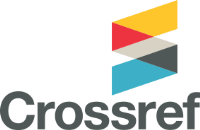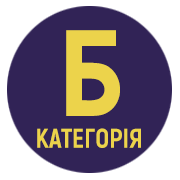STEM EDUCATION IN GEOGRAPHY CLASSES: INNOVATIVE APPROACHES GENERAL SECONDARY EDUCATION INSTITUTIONS
DOI:
https://doi.org/10.32782/ped-uzhnu/2025-8-22Keywords:
STEM education, geography, New Ukrainian School, model curricula, geographic information systems, interdisciplinary learning, project-based learning, digital technologiesAbstract
The article explores the integration of STEM education (Science, Technology, Engineering, Mathematics) into geography teaching in general secondary education institutions within the New Ukrainian School (NUS) reform.Drawing on the Model Curricula for grades 6–9, implemented gradually since 2022, it analyzes geography’s potential as an interdisciplinary subject for developing key student competencies, such as informational literacy, critical thinking, and civic and social responsibility. The study addresses challenges in implementing STEM approaches in geography lessons, including inadequate material and technical resources, limited teacher training, and a lack of methodological materials aligned with the model curricula. Innovative solutions are proposed, such as the use of geographic information systems (GIS), project-based learning, interdisciplinary modules, and digital technologies like virtual reality and programming. Special focus is given to integrating STEM into grade 6 topics, including “Globe – Earth’s Model,” “Lithosphere,” and “Atmosphere,” as well as topics in grades 7–9, such as environmental monitoring, natural resource mapping, and “smart city” modeling. Practical examples combine science, technology, engineering, and mathematics, such as climate data analysis, 3D terrain modeling, and designing systems to mitigate natural disasters. The role of geography teachers as facilitators of innovative approaches and the need for professional development through GIS, programming, and project-based learning training are emphasized. Recommendations for schools include establishing STEM laboratories, integrating technologies into extracurricular activities, and collaborating with scientific institutions. The article underscores that STEM education in geography lessons prepares students to tackle global challenges like climate change and sustainable development.
References
Бібік Н. М. Компетентнісний підхід у сучасній освіті: досвід, проблеми, перспективи. Освіта України. Вип. 15, 2017. С. 4–7.
Карплюк О. В. Формування картографічної компетентності учнів на уроках географії в Новій українській школі. Географія та основи економіки в школі. Вип. 4, 2019. С. 12–17.
Коваленко І. І. Використання інтерактивних технологій на уроках географії в Новій українській школі. Інформаційні технології в освіті. Вип. 2, 2020. С. 25–30.
Компетентнісне навчання та викладання географії у системі неперервної педагогічної освіти : кол. монографія / [авт. кол.: Л. П. Вішнікіна, А. А. Шуканова, О. А. Федій, С. П. Сарнавський та інші.] ; за наук. ред. д-ра пед. наук Л. П. Вішнікіної. Полтава : ПНПУ імені В. Г. Короленка, 2022. 265 с.
Міністерство освіти і науки України. Концепція Нової української школи. 2016. URL: https://mon.gov.ua/ua/osvita/zagalna-serednya-osvita/nova-ukrayinska-shkola (дата звернення: 04.05.2025).
Модельна навчальна програма «Географія. 6–9 класи» для закладів загальної середньої освіти / С. П. Запотоцький, Г. І. Карпюк, Р. В. Гладковський та ін. 2022. URL: https://mon.gov.ua/storage/app/media/zagalna%20serednya/Navchalni.prohramy/2021/14.07/Model.navch.prohr.5-9.klas.NUSH%20poetap.z.2022/Prirod.osv.galuz/Heohrafiya/Heohrafiya.6-9-kl.Zapototskyy.ta.in.06.05.2022.pdf (дата звернення: 04.05.2025).
Модельна навчальна програма «Географія. 6–9 класи» для закладів загальної середньої освіти / С. Г. Кобернік, Р. Р. Коваленко, Т. Г. Гільберг, Л. М. Даценко. 2022. URL: https://mon.gov.ua/storage/app/media/zagalna%20serednya/Navchalni.prohramy/2021/14.07/Model.navch.prohr.5-9.klas.NUSHpoetap.z.2022/Prirod. osv.galuz/Heohrafiya/Heohrafiya.6-9%20kl.Kobernik.ta.in.06.05.22.pdf (дата звернення: 04.05.2025).
Пометун О. І. Компетентнісний підхід в освіті: теоретичні засади та шляхи реалізації. Педагогіка. Вип. 3, 2016. С. 12–18.
Топузов О. М. Проблеми впровадження STEM-освіти в Україні. Педагогічна освіта: теорія і прак- тика. Вип. 25. 2018. С. 12–18.
Якименко С. М. Підготовка вчителів до впровадження STEM-освіти: виклики та перспективи. Наукові записки. Вип. 178, 2019. С. 45–50.
Bybee R. W. The Case for STEM Education: Challenges and Opportunities. Arlington, VA: NSTA Press. 2013.
Darling-Hammond L. Teacher education around the world: What can we learn from international practice? European Journal of Teacher Education, Vol. 40(3), 2017. P. 291–309.
Goodchild, M. F. Twenty years of progress: GIScience in 2010. Journal of Spatial Information Science. Vol. 1, Part II, 2010. P. 3–20.
Honey M., Pearson G., Schweingruber, H. (Eds.). STEM Integration in K-12 Education: Status, Prospects, and an Agenda for Research. Washington, DC: The National Academies Press. 2014.







